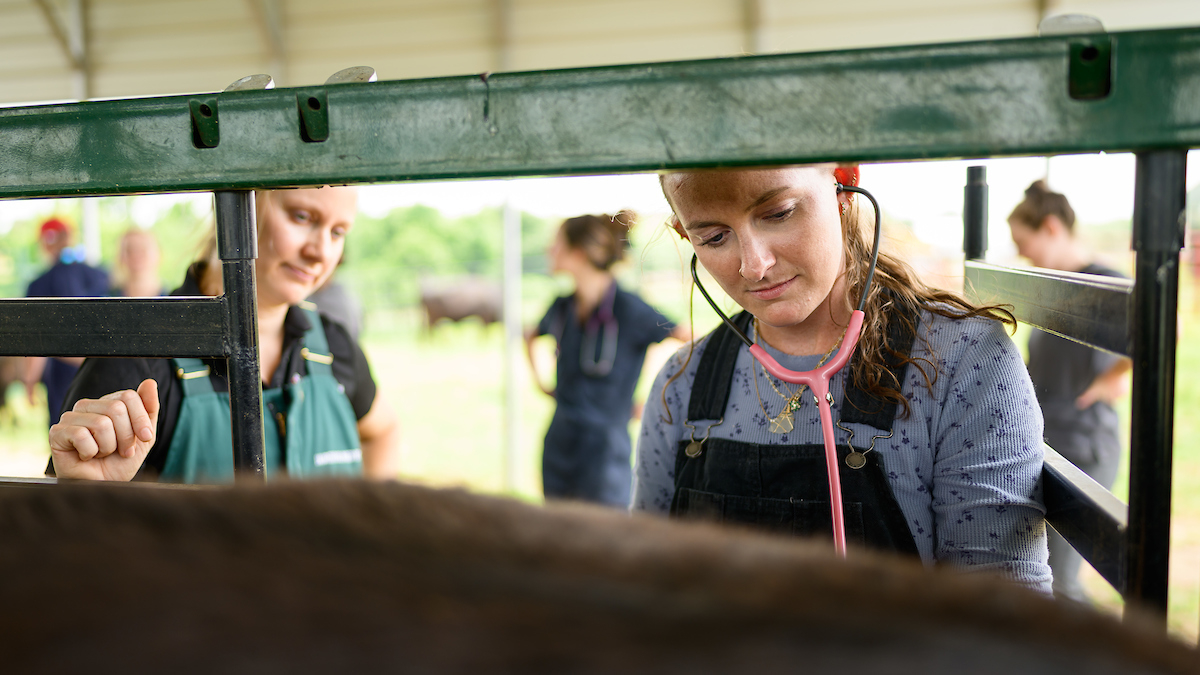TRAUMA DOGS
NC State Veterinary Hospital is recruiting severely injured dogs or dogs with acute intra-abdominal hemorrhage from intra-abdominal masses, for enrollment in a clinical trial testing a clot-stabilizing drug called tranexamic acid (TXA).
Background
In humans, early administration of TXA following trauma significantly reduces mortality and risk of death from hemorrhage. Normally, blood clotting is a delicate balance that must stop bleeding without forming excessive clots that could obstruct essential blood flow. Clot breakdown, a process known as fibrinolysis, is part of that balancing act and serves to remove excessive clot material after bleeding is controlled. Following major injuries or internal bleeding, fibrinolysis can become unregulated and excessive, leading to more bleeding with a need for massive blood transfusions and increased risk of death. TXA works by stopping the process of fibrinolysis, stabilizing clots that are needed to prevent further bleeding in these patients.
The objective of this study is to determine the efficacy of a proposed TXA treatment protocol to reverse fibrinolysis in dogs with hemorrhagic shock due to trauma or spontaneous bleeding from intra-abdominal masses. This will be the first prospective evaluation of clinical efficacy of tranexamic acid in the dog following trauma and is funded by the United States Special Operations Command to advance trauma care for military dogs.
Purpose
This is a randomized and double-blinded, placebo-controlled multicenter clinical trial.
Goals of Our Study: The small amount of blood collected during this study will be used to provide information to help explain the mechanism behind TXA action in trauma or other causes of hemorrhagic shock. This information is currently lacking in human studies reporting the survival advantage in people given TXA after trauma or other causes of hemorrhagic shock. Both human and veterinary trauma practitioners, whether military or civilian, will benefit from this contribution to an relatively unexplored problem:
For our military, the greatest impact of this study is the potential preservation of life and operational utility of canine force-multipliers following trauma while simultaneously improving our understanding of the mechanism of hemostatic action of TXA.
For primary care veterinarians, we hope that the study will improve the chance of survival of your patient while generating new knowledge about how to treat these dogs.
For dog owners, the study provides a subsidy of $2,500 towards treatment of their dog at NC State Veterinary Hospital, and hopefully will help us save its life!
Inclusion Criteria
- Dogs with hemorrhagic shock due to trauma or spontaneous hemoabdomen may be eligible for inclusion.
- Dogs must be seen at NCSU within 24 hours of injury or the onset of signs attributable to new or ongoing intra-abdominal hemorrhage (not due to anticoagulant rodenticide ingestion).
- Dogs may be stabilized at their primary care facility prior to referral to NC State.
- The dog must have bled enough to benefit from transfusion (even if it might survive without transfusion)
- Dogs must arrive at NC State within 24 hours of injury or the onset of signs of severe intra-abdominal hemorrhage.
- Dogs must have excessive fibrinolysis at the time of admission to NC State; we will document this via thromboelastography (TEG)
- The study will pay for the cost of thromboelastography even if the dog is excluded based on the test results.
Exclusion Criteria
- Administration of any synthetic colloid such as VetstarchTM or hetastarch.
- Anticoagulant or antiplatelet drug therapy in the past 2 weeks
- History of documented thromboembolic disease.
- < 4 kg, > 75 kg
Study Protocol
- About 5 mL (1 teaspoon) of blood will be collected for TEG and hemostatic tests at enrollment and again at 8, 12 and 24 hours after enrollment.
- Eligibility will be determined during initial stabilization and treatment at NC State Veterinary Hospital and the determination process will be complete in less than 1 hour.
- Eligible dogs will be treated with maropitant, 1 mg/kg IV, to prevent vomiting (a known side effect of TXA administration)
- Dogs will be randomized to receive either 20 mg/kg TXA (10 mg/mL) or equivalent volume of 0.9% saline over 20 minutes followed by constant rate infusion of the same dosage over 8 hours; all personnel are blinded as to treatment.
- If not already transfused, dogs will receive a minimum of 10 mL/kg packed red blood cells and 10 mL/kg fresh frozen plasma (or 20 mL/kg of whole blood) prior to the conclusion of the TXA infusion.
- All other aspects of care will be provided as for any dog not enrolled in the study. The study protocol will not delay or impede any other aspect of treatment.
Incentive
The study provides a subsidy of $2,500 towards treatment of the dog at NC State Veterinary Hospital, and hopefully will help us save its life!
Enrollment Start
Enrollment Finish
Eligibility
Eligibility Cats must be male, must have a history of idiopathic cystitis and urethral obstructions, cannot have an existing perineal urethrostomy, cannot have other major illnesses that would affect lifespan or ability to undergo anesthesia.
Flyer
Contact
- Categories:


